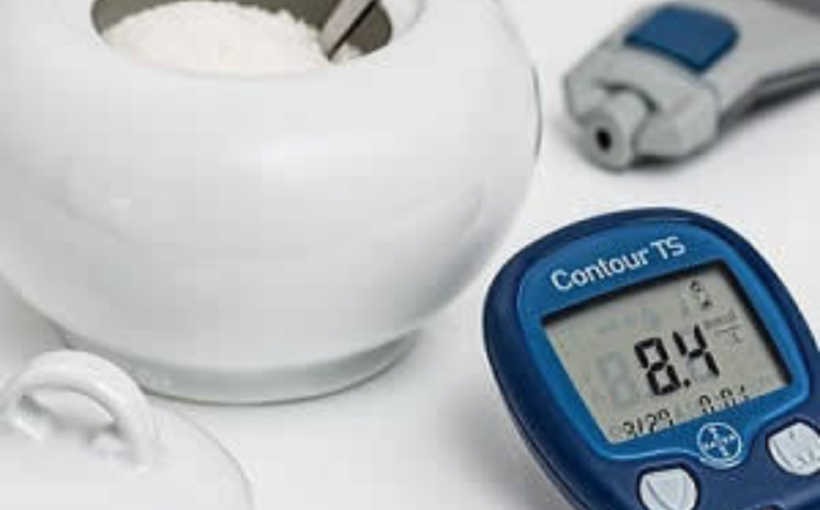The study team, led by Rozalina McCoy, M.D., an endocrinologist and primary care physician at Mayo Clinic, sought to identify the real-world implications of intensive glucose-lowering therapy across the U.S. The team showed that overly intensive glucose-lowering therapy — when patients receive more medication than is required based on their hemoglobin A1C level — was not only common across the U.S., but also directly contributed to 4,774 hospitalizations and 4,804 emergency department visits in a two-year period.
Their findings were published online Aug. 15 in Mayo Clinic Proceedings.”Importantly, these numbers are a large underestimation of the true scope of overtreatment-induced hypoglycemic events,” says Dr. McCoy. There are many reasons why people with diabetes may experience hypoglycemia. Dr. McCoy says that people who have multiple chronic health conditions, are older, have Type 1 diabetes, or are treated with medications such as insulin or sulfonylureas are at highest risk.”While some episodes of hypoglycemia may be unavoidable, especially if caused by unmodifiable risk factors such as need for insulin therapy, others may be preventable, as in the case of overtreatment,” she states.
“In an earlier study, we separated out the effect of overtreatment from other high risk factors and showed it was a significant independent contributor to hypoglycemic events,” says Dr. McCoy. “In this study, we wanted to learn more about national scope of those overtreatment-related events.””Because there is no U.S.-wide data about how many hypoglycemic events may be avoided if patients were treated less intensively, we had to separately calculate how many Americans are overtreated,” continues Dr. McCoy. “We then used data from the earlier study, combined with this new data, to estimate the number of hypoglycemia-related emergency department visits and hospitalizations likely caused by overtreatment.
“Persistent elevation in blood glucose levels increases the risk of diabetes complications, such as cardiovascular disease, retinopathy (eye disease), nephropathy (kidney disease) and neuropathy. Glucose-lowering medications reduce these risks, but treatment plans must be evidence-based and individualized, says Dr. McCoy. “It is important not only to ensure that we do not undertreat our patients with diabetes, but also that we do not overtreat them because both undertreatment and overtreatment can harm our patients,” she says.Patients and research methodsDr. McCoy and her team used patient data from the National Health and Nutrition Examination Survey (2011-2014) and the OptumLabs Data Warehouse to conduct this study.
They first estimated the prevalence of intensive glucose-lowering therapy among U.S. adults using the most recently available National Health and Nutrition Examination Survey. Then the researchers determined the approximate number of hypoglycemia-related emergency department visits and hospitalizations attributable to such intensive therapy using OptumLabs data obtained in the earlier study. The National Health and Nutrition Examination Survey data identified more than 10.7 million nonpregnant adults with diabetes whose hemoglobin A1C was in the range recommended by clinical guidelines (less than 7%).
The researchers found that almost 22% of these individuals were intensively treated. Individuals were considered to be receiving intensive treatment if they were taking a medication to achieve HbA1C levels of 5.6% or less, or were taking two or more medications to achieve HbA1C levels of 5.7-6.4%. “Hypoglycemia, or low blood glucose, is one of the most common serious adverse effects of diabetes therapy, causing both immediate and long-term harm to patients who experience it,” says Dr. McCoy. “Severe hypoglycemia, defined by the need for another person to help the patient treat and terminate their hypoglycemic event, is associated with increased risk of death, cardiovascular disease, cognitive impairment, falls and fractures, and poor quality of life.
“To gain further insight, the investigators also subcategorized patients as clinically complex if the patient:Was age 75 or olderHad two or more limitations on daily living activities, such as the inability to dress, feed, walk from room to room, or get in or out of bedHad end-stage kidney diseaseHad three or more chronic conditionsOf the 10.7 million patients, 32.3% were clinically complex. Although this did not appear to be a factor in whether a person was intensively treated, Dr. McCoy notes that it would have been ideal if it had been. “Older people and others we consider clinically complex are more at risk to develop hypoglycemia, as well as experience other adverse events because of intensive or overtreatment.
However, at the same time, these patients are unlikely to benefit from intensive therapy rather than moderate glycemic control,” says Dr. McCoy. “When we develop a diabetes treatment plan, our goal should be to maximize benefit while reducing harm and burden of treatment.”Dr. McCoy says that the researchers found the study results alarming, with as many as 2.3 million Americans overtreated between 2011 and 2014. Moreover, clinically complex patients were intensively treated at a similar rate as patients who were not complex.


